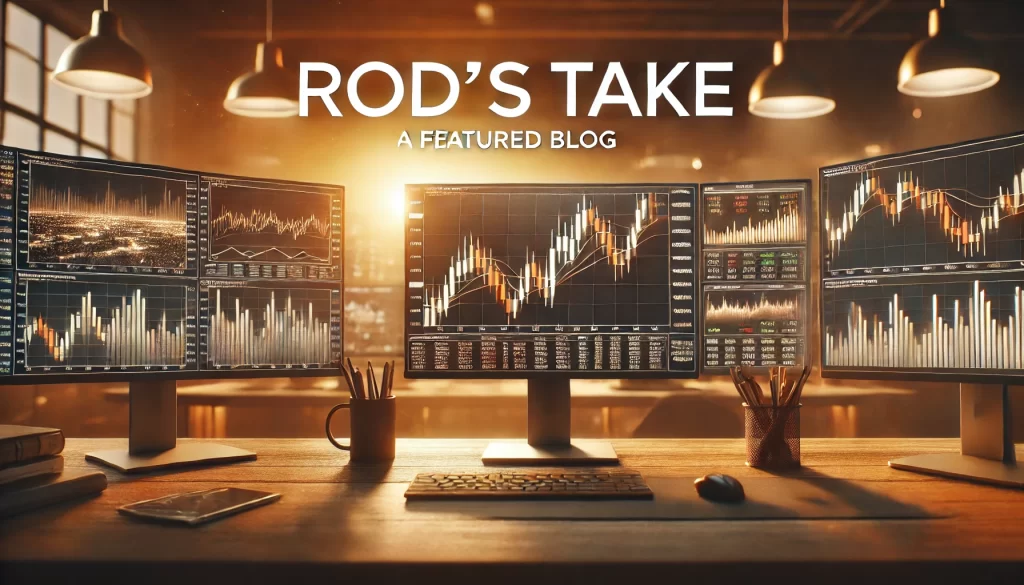
As traders, we’re constantly hit with advice that sounds insightful but lacks substance. From “accept your losses” to “stick to your strategy,” these trading clichés seem wise on the surface but often leave traders with little they can actually use.
That’s where my first edition of “Rod’s Take” comes in. Let’s cut through the feel-good phrasing and borderline nonsense to provide a clearer, results-oriented perspective on the typical tips circulating in the trading echo chamber.
This first round of “Rod’s Take” came from a recent email from a futures prop firm. The email offered a handful of trading tips meant to help traders, but in my not-so-humble opinion, they were vague at best. Below, I break down each one and reframe it with practical steps that are actionable, memorable, and, most importantly, actually useful.
1. Accept that losses will happen
Tip: “Losses are just another part of trading. The more accepting you are, the less normal losses will affect your mindset.”
Rod’s Take: Losses are a part of trading—but if you’re “accepting” too many of them, something’s off. If your “losses are normal,” it’s time to review your approach, not just make peace with a string of red days. Let’s make a pact: we accept only controlled, infrequent losses that fit within a risk threshold we can actually afford. Constant losses are neither financially sustainable nor mentally viable. Bottom line? Keep losses to a strict minimum, and accept only those that are a calculated part of your strategy. Accepting loss after loss isn’t zen; it’s just plain bad trading.
2. Do your research
Tip: “Knowing the projected performance of certain futures helps clarify decisions and reduces anxiety, especially after a loss.”
Rod’s Take: This one has a lot of layers, but “doing research” needs to be about more than scrolling through charts and hoping for an epiphany. Few traders have a framework for meaningful research, and even fewer know what to do with it. Here’s what works: instead of projecting the performance of everything on the market, start by tracking your own. Focus on critical metrics: your win rate, average profit per trade, maximum drawdown, etc. Without these, “research” is just another way to spend hours in a chart hole, losing sleep and clarity. In other words, stop “researching” and start measuring your actual trades.
3. Reframe your losses
Tip: “Rather than viewing losses as mistakes, consider them learning opportunities by reviewing your decision path and identifying areas for improvement.”
Rod’s Take: “Reframe your losses” sounds like something a little league coach would say after the other team scores 20 runs in the first inning. Sure, every loss is a “learning opportunity”—but unless you know what you’re supposed to learn, it’s just a phrase. To really improve, losses need a structured review process. Instead of reframing losses with vague takeaways, get specific. Identify patterns in your trades that led to those losses. Was it poor entry timing, too-tight stops, or a trade taken on a whim? The learning happens when you stop talking about “reframing” and start documenting patterns, adjusting your strategy accordingly.
4. Don’t let emotions lead
Tip: “Successful futures traders master their emotions, making decisions based on logic, research, and their trading strategy.”
Rod’s Take: Successful traders don’t “master” emotions. They understand and work with them. Trading requires you to make a never ending series of decisions with incomplete information, which is basically emotional gasoline. Rather than aiming for controlling your emotions, learn to function despite emotions. There’s a big difference between suppressing fear and knowing how to make decisions in the middle of it. Get comfortable with discomfort, learn your tendencies, and build your strategy around them. “Mastering” emotions is as likely as winning the lottery; let’s aim for the more realistic goal of understanding and managing them instead.
5. Stick to your strategy
Tip: “Your trading strategy is a blueprint to fall back on, helping you navigate moments of doubt. A strategy tailored to your style builds confidence.”
Rod’s Take: “Tailored to your style” is great advice if you know what your “style” is, but most traders can’t quite put their finger on it yet. The key isn’t sticking to a style—it’s sticking to discipline. Styles can evolve, but discipline is a non-negotiable constant. What makes traders successful is adaptability; if you’re waiting for a perfect “style,” you’re wasting valuable time. Focus on consistent risk control and disciplined execution; that’s where real confidence comes from, not from forcing a style that sounds good on paper but falls apart in the market.
6. Avoid Loss Aversion
Tip: “To grow as a trader, you need to know when to step back and when to press forward. Losses are part of the game; the key is to bounce back stronger without letting fear dominate.”
Rod’s Take: “Bounce back” sounds great, but this advice is about as specific as telling someone to “win the game.” How do you “bounce back stronger”? You might start by setting concrete metrics for when to step back, or when to press on. This way, you know when to cool off and when to keep going, based on clear guidelines instead of vague sentiments. Remember, losses are part of the game—but knowing when to sit out a round isn’t weak; it’s smart. Don’t just “avoid loss aversion.” Avoid vague advice and track real metrics that will give you an objective picture of when to take action and when to reset.
In “Rod’s Take,” we’ll keep translating abstract trading tips into actionable steps. So next time you see advice that sounds good but feels useless, you know where to look for a no-BS breakdown. Keep it smart, keep it measurable, and stay tuned for more takes.
Commodity Futures Trading Commission. Futures and Options trading has large potential rewards, but also large potential risk. You must be aware of the risks and be willing to accept them in order to invest in the futures and options markets. Don’t trade with money you can’t afford to lose. This is neither a solicitation nor an offer to Buy/Sell futures or options. No representation is being made that any account will or is likely to achieve profits or losses similar to those discussed on this web site. The past performance of any trading system or methodology is not necessarily indicative of future results.
CFTC RULE 4.41 – HYPOTHETICAL OR SIMULATED PERFORMANCE RESULTS HAVE CERTAIN LIMITATIONS. UNLIKE AN ACTUAL PERFORMANCE RECORD, SIMULATED RESULTS DO NOT REPRESENT ACTUAL TRADING. ALSO, SINCE THE TRADES HAVE NOT BEEN EXECUTED, THE RESULTS MAY HAVE UNDER-OR-OVER COMPENSATED FOR THE IMPACT, IF ANY, OF CERTAIN MARKET FACTORS, SUCH AS LACK OF LIQUIDITY. SIMULATED TRADING PROGRAMS IN GENERAL ARE ALSO SUBJECT TO THE FACT THAT THEY ARE DESIGNED WITH THE BENEFIT OF HINDSIGHT. NO REPRESENTATION IS BEING MADE THAT ANY ACCOUNT WILL OR IS LIKELY TO ACHIEVE PROFIT OR LOSSES SIMILAR TO THOSE SHOWN.





About The Author: Roderick Casilli
Pusher of buttons, guitar hack, occasional smart-ass.
More posts by Roderick Casilli